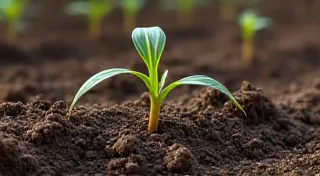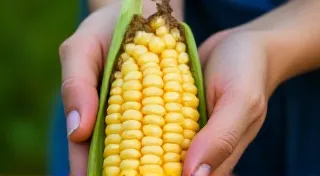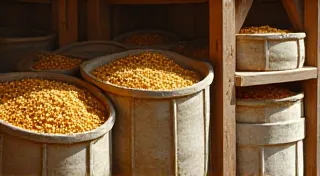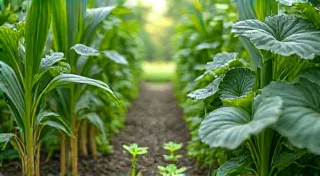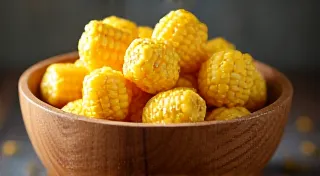Chromatic Rhythms: Mapping the Palette of Heirloom Corn Varieties
There’s a quiet beauty in the passage of time, a resonance found not just in grand monuments but also in the seemingly humble objects we’re fortunate enough to hold onto. Like an antique accordion, its bellows worn smooth by countless melodies, heirloom corn carries a history within its kernels – a history of adaptation, resilience, and a profound connection to the hands that cultivated it. Modern agriculture often prioritizes uniformity and yield, leaving behind a richness of genetic diversity that whispers tales of generations past. Forget the predictable gold; heirloom corn explodes with a spectrum of colors rarely seen in today’s fields, each hue a brushstroke in a vibrant, living canvas.
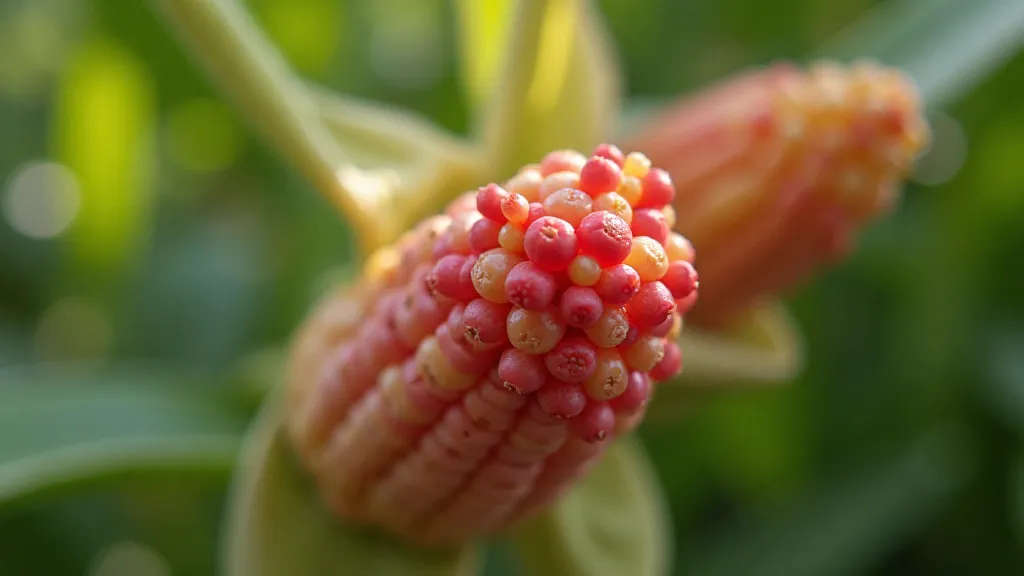
A Tapestry of Colors: Beyond the Golden Standard
For most, the image of corn conjures a field of sunshine yellow. But the truth is far more nuanced, far more beautiful. Heirloom corn varieties display a stunning range of colors: deep purples, vibrant blues, striking pinks, soft creams, and even fiery oranges. These aren't merely aesthetic variations; they are reflections of the genetic heritage passed down through families and communities, a tangible link to the past. Consider the 'Blue Andalusian' corn, its kernels shimmering with a glacial blue hue, or the 'Painted Mountain,' a dazzling mix of purple, pink, and yellow, each cob a unique work of art. These colors aren't random; they’re governed by intricate genetic combinations, often tied to the presence or absence of pigments like anthocyanins.
The Science of Hue: Anthocyanins and Beyond
Anthocyanins, the same pigments responsible for the deep colors of blueberries and eggplants, play a pivotal role in the coloration of many heirloom corn varieties. Their presence is often influenced by environmental factors like soil pH and sunlight exposure. Acidic soils tend to enhance anthocyanin production, resulting in more intense colors. Beyond anthocyanins, other pigments like carotenoids contribute to the yellows and oranges we see in some varieties. Studying these pigment pathways is like uncovering a secret language, a fascinating blend of biology and artistry. It’s a reminder that even in a seemingly simple vegetable, complex genetic processes are at work, shaping the world around us.
The act of restoring an old accordion is a delicate process. Each key, each bellows, tells a story. You’re not just repairing an instrument; you're preserving a legacy. Similarly, cultivating heirloom corn is an act of preservation. Each kernel carries within it the potential to reconnect us to our agricultural roots.
Historical Echoes: Corn and Community
The history of corn itself is interwoven with the story of human civilization. Originating in Mexico thousands of years ago, corn was domesticated and spread throughout the Americas, adapting to diverse climates and cultures. Heirloom varieties represent a snapshot of this incredible journey. Many were developed by Indigenous communities, each kernel carrying the knowledge and wisdom of generations. 'Wapsie Valley White' corn, for example, originates from Iowa and was cherished for its sweetness and ability to be processed into hominy. 'Dakota Black' corn, with its dramatic, almost black kernels, was a staple crop for many Native American tribes, known for its strength and resilience. These are not just varieties; they are cultural touchstones.
Imagine the hands that planted the first seeds of ‘Dakota Black,’ the rituals surrounding the harvest, the stories shared around the fire. These traditions, these connections to the land, are invaluable, and preserving heirloom corn is a way to honor those who came before us. Just as a skilled repairer can often deduce the history of an accordion simply by examining its construction and wear patterns, a careful grower can discern the story of a corn variety through its unique characteristics and regional adaptations.
Cultivating the Palette: Growing Your Own Heirloom Corn
Growing heirloom corn isn’t drastically different from cultivating modern varieties, but it does require a bit more care and attention to detail. Heirloom varieties often have shorter growing seasons and may be more susceptible to pests and diseases. Choosing a variety suited to your climate and soil conditions is crucial. Corn is a wind-pollinated crop, so ensuring adequate pollination is essential. Planting multiple varieties together can improve pollination success. Like carefully cleaning the reeds of an old accordion, preparing the soil properly—enriching it with organic matter and ensuring good drainage—is fundamental for a successful harvest.
The Art of Preservation: A Gardener's Responsibility
The erosion of genetic diversity in modern agriculture is a serious concern. When we rely on a handful of standardized varieties, we lose the resilience and adaptability that comes from a wider range of genetic traits. Heirloom corn varieties represent a vital repository of that lost diversity. Saving seeds from your harvest is a simple yet powerful way to contribute to this preservation effort. Just as a collector meticulously safeguards rare instruments, gardeners can act as stewards of these valuable genetic resources, ensuring that they continue to thrive for generations to come.
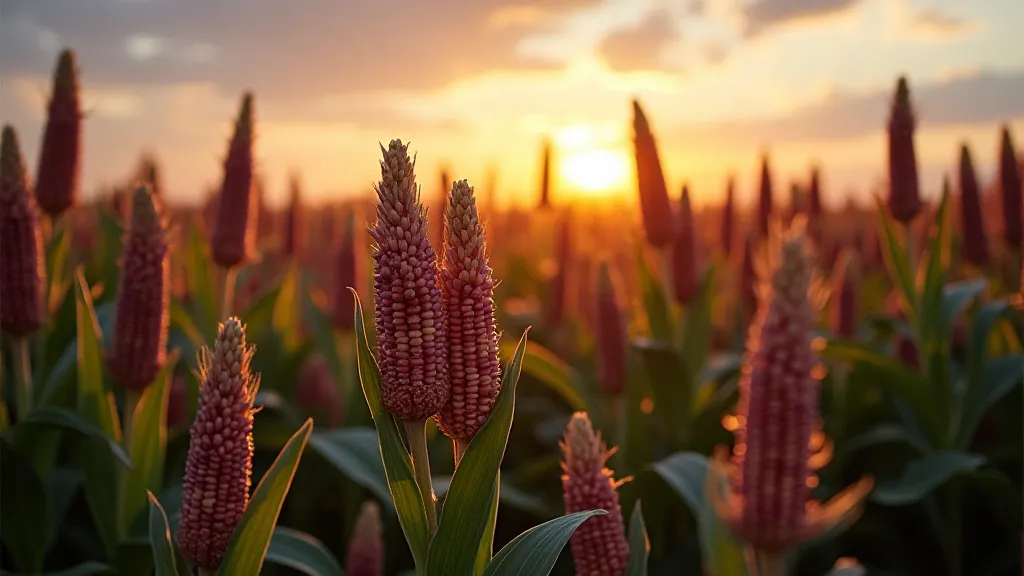
A Symphony of Flavors and Colors
Beyond their aesthetic beauty, heirloom corn varieties often boast superior flavor and nutritional qualities. Many are sweeter and more flavorful than modern varieties. ‘Henderson’s Sugar Bush’ corn, for example, is renowned for its exceptional sweetness and creamy texture. And, like the satisfying resonance of a finely tuned accordion, the taste of freshly harvested heirloom corn is a reward for the gardener’s labor – a connection to the earth, to history, and to the beauty of diversity. It's a chromatic rhythm, a vibrant tapestry woven from generations of human ingenuity and the enduring power of nature.
To cultivate heirloom corn is not merely to grow a crop; it is to participate in a living legacy – a celebration of the past, a testament to the present, and a promise for the future. It’s a reminder that true beauty lies not in uniformity, but in the rich and varied expressions of life itself.
